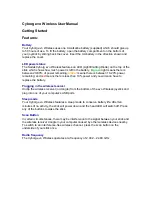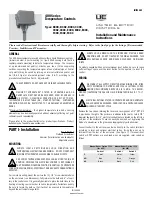
CHAPTER 5: SETTINGS
GROUPED ELEMENTS
L90 LINE CURRENT DIFFERENTIAL SYSTEM – INSTRUCTION MANUAL
5-283
5
Figure 5-154: RGF and percent differential zones of protection
This protection is often applied to transformers having impedance-grounded wye windings. The element can also be
applied to the stator winding of a generator having the neutral point grounded with a CT installed in the grounding path, or
the ground current obtained by external summation of the neutral-side stator CTs. The following figure shows the basic
application and wiring rules.
Figure 5-155: Typical applications of RGF protection
The relay incorporates low-impedance restricted ground fault protection. This low-impedance form of protection faces
potential stability problems. An external phase-to-phase fault is an ultimate case. Ideally, there is neither ground (IG) nor
neutral (IN = IA + IB + IC) current present. If one or more of the phase CTs saturate, a spurious neutral current is seen by the
relay. This is similar to a single infeed situation and can be mistaken for an internal fault. Similar difficulties occur in a
breaker-and-a-half application of the restricted ground fault, where any through fault with a weak infeed from the winding
itself can cause problems.
The UR uses a novel definition of the restraining signal to cope with the above stability problems while providing fast and
sensitive protection. Even with the improved definition of the restraining signal, the breaker-and-a-half application of the
restricted ground fault must be approached with care, and is not recommended unless the settings are carefully selected
to avoid maloperation due to CT saturation.
















































